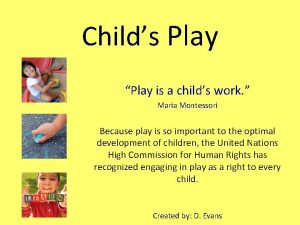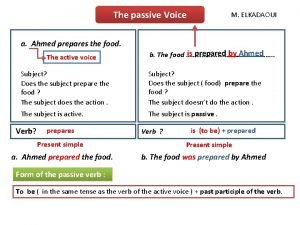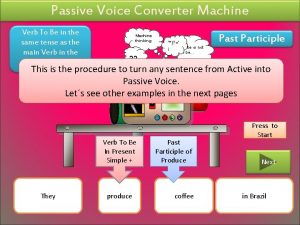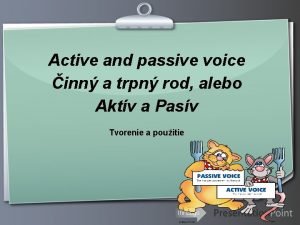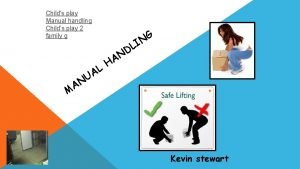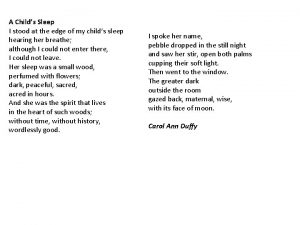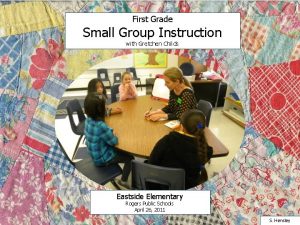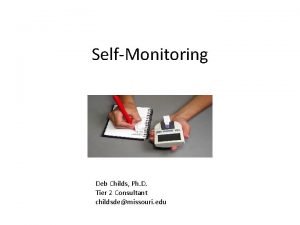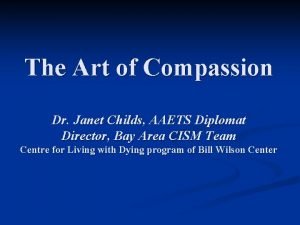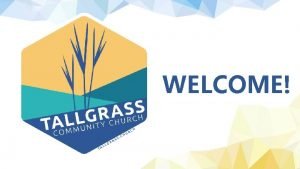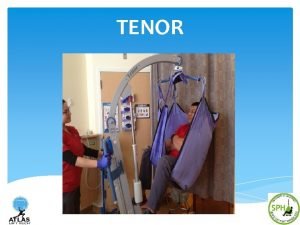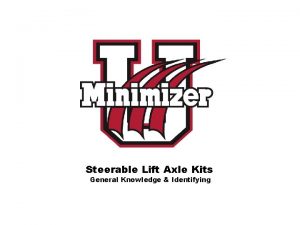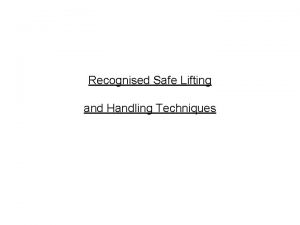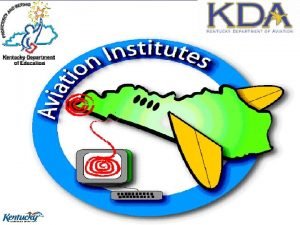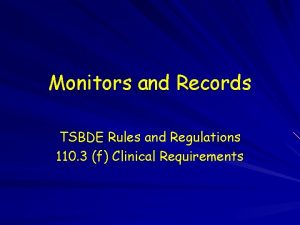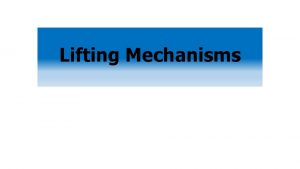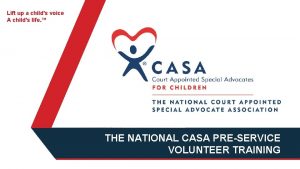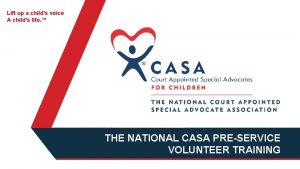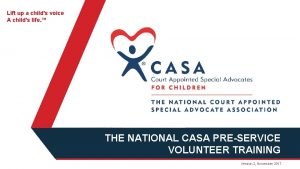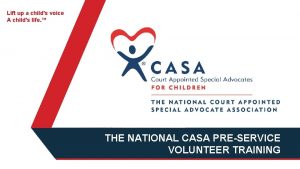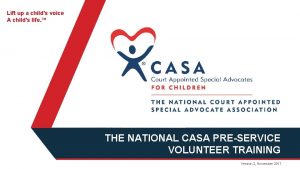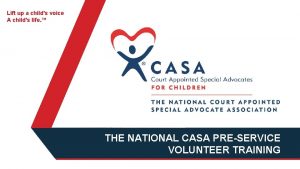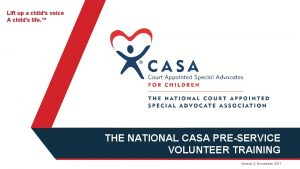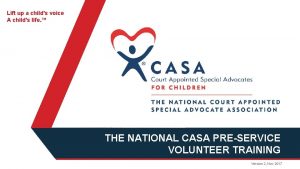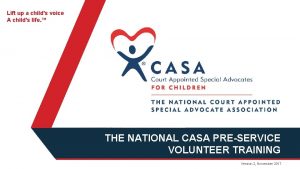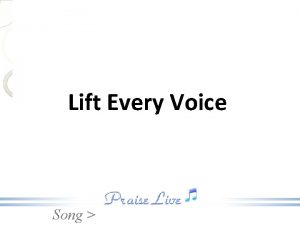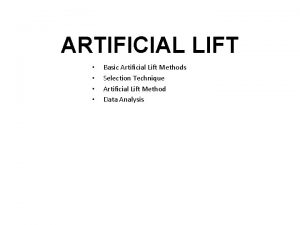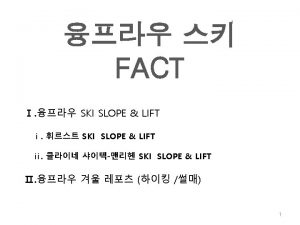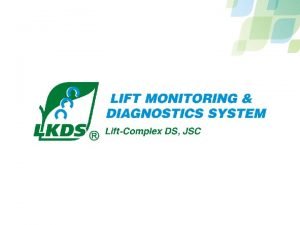Lift up a childs voice A childs life















![Chapter 3: What is Child Trauma? 3 B [“Shane’s Story”] 1 B What is Chapter 3: What is Child Trauma? 3 B [“Shane’s Story”] 1 B What is](https://slidetodoc.com/presentation_image_h/1664037f66ab7af931a66ccac5842bd8/image-16.jpg)












![Chapter 3: Turn into an Open-Ended Question 3 F [ For a child ] Chapter 3: Turn into an Open-Ended Question 3 F [ For a child ]](https://slidetodoc.com/presentation_image_h/1664037f66ab7af931a66ccac5842bd8/image-29.jpg)
![Chapter 3: Turn into an Open-Ended Question 3 F [ For a parent ] Chapter 3: Turn into an Open-Ended Question 3 F [ For a parent ]](https://slidetodoc.com/presentation_image_h/1664037f66ab7af931a66ccac5842bd8/image-30.jpg)
![Chapter 3: Turn into an Open-Ended Question 3 F [ For a parent ] Chapter 3: Turn into an Open-Ended Question 3 F [ For a parent ]](https://slidetodoc.com/presentation_image_h/1664037f66ab7af931a66ccac5842bd8/image-31.jpg)
![Chapter 3: The CASA/GAL Volunteer Interview 3 H [ Watch the video ] “Interviewing Chapter 3: The CASA/GAL Volunteer Interview 3 H [ Watch the video ] “Interviewing](https://slidetodoc.com/presentation_image_h/1664037f66ab7af931a66ccac5842bd8/image-32.jpg)












- Slides: 44

Lift up a child's voice A child's life. ™ THE NATIONAL CASA PRE-SERVICE VOLUNTEER TRAINING

Chapter 3: Trauma, Resilience, and Communication Skills Pre-Work Recap, Chapter Overview & Competencies Trauma and Resilience Skill Building: Communication & Interviewing Working Chapter Wrap-Up: a Case Review & Evaluation Chapter 4: Pre-Work 2

Chapter 3: Pre-Work üWatch the “Shane’s Story” video and prepare a list of traumatic experiences for a child üRead information on understanding child trauma üRead information on basic elements of communication – communication and CASA/GAL volunteer work üRead the information on open-ended and closed ended questions in the Chapter 3 Pre-Work packet (This information is for Activity 3 G) üRead the information on CASA/GAL Interview in the Chapter 3 Pre-Work packet (This information is for Activity 3 H) 3

Chapter 3: Pre-Work üRead the initial case notes for the Black-Smith case üWatch Part 1 of the video showing a CASA/GAL volunteer interviewing a 4 -year-old child. Then design and conduct a brief interview with a child üWatch the video “First Impressions: Exposure to Violence and a Child’s Developing Brain” 4

Chapter 3: Overview This chapter focuses on trauma and resilience as they relate to the children you’ll work with as a CASA/GAL volunteer. This chapter also offers an overview of communication and interviewing skills and practice writing effective recommendations to the court. 5

Chapter 3: Chapter Overview and Competencies Competency Category Foundation of Knowledge Sound Judgement Knowledge, Skills & Attributes Development in Chapter 3 Understands the nature and scope of trauma and how it affects children Understands possible reactions of children to separation and loss Understands the importance of resilience in overcoming trauma in children Understands making appropriate fact based recommendations to the Court Communication Knows how to utilize basic communication and interviewing skills Knows strategies for interviewing children 6

Chapter 3: Trauma, Resilience, and Communication Skills Skill Building: Pre-Work Recap, Trauma and Communication Chapter Overview & Competencies Resilience & Interviewing Working Chapter Wrap-Up: a Case Review & Evaluation Chapter 4: Pre-Work 7

Chapter 3: Preparing to Talk about Trauma 3 A “There was a child went forth every day, and all that he looked upon became part of him. ” - Walt Whitman 8

Chapter 3: The Feelings Thermometer 3 A VERY HOT • Very uncomfortable • Extremely stressed anxious • Need to get out of here now HOT • Moderately uncomfortable • Stressed anxious • Distracted and edgy WARM • Mildly uncomfortable • Slightly stressed anxious • Losing my focus JUST RIGHT • Comfortable • Not stressed or anxious • Focused and engaged COOL • A little bored • Losing my focus ICE COLD • Totally bored • Not focused or engaged • Planning my escape 9

Chapter 3: Child Trauma 3 B When a child witnesses or experiences an event that poses a real or perceived threat to the life or well-being of the child or someone close to the child. üThe event causes feelings of fear, helplessness or horror üThe child is unable to cope with the intense feelings 10

Chapter 3: Types of Trauma Acute 3 B Chronic Complex Historical 11

Chapter 3: Factors Impacting the Effect of Trauma 3 B üThe child’s age or developmental stage üThe child’s perception of the danger faced üWhether the child was a victim or a witness üThe child’s relationship to the victim or perpetrator üThe child’s past experience with trauma üThe adversities the child faces following the trauma üThe availability of adults who can offer help & protection 12

Chapter 3: Types of Trauma 3 B • Treat children as individuals not victims • Consider the child’s past experiences üYou may request a trauma screening for the child • Parents may have unresolved trauma histories üParents also may undergo a trauma screening 13

Chapter 3: Questions to Ask 3 B The following questions can help determine whether to recommend a trauma assessment: • Has the child experienced early and repeated exposure to overwhelming events? • Is the child having difficulty controlling behavior? • Is the child having difficulty with sustaining attention, concentration, or learning? 14

Chapter 3: Questions to Ask (Cont’d. ) 3 B • Is the child showing persistent difficulties in relationships with others? • Does the child have difficulty regulating bodily states and emotions? • Does the child have multiple mental health diagnoses without any one sufficiently explaining his/her problems? 15
![Chapter 3 What is Child Trauma 3 B Shanes Story 1 B What is Chapter 3: What is Child Trauma? 3 B [“Shane’s Story”] 1 B What is](https://slidetodoc.com/presentation_image_h/1664037f66ab7af931a66ccac5842bd8/image-16.jpg)
Chapter 3: What is Child Trauma? 3 B [“Shane’s Story”] 1 B What is Child Trauma? 16

Chapter 3: Long Term Effects of Childhood Trauma 3 C [ Watch the video ] "Adverse Childhood Experiences Study" Read the Adverse Childhood Experiences (ACE) Calculator 17

Chapter 3: The Separation Experience 3 D Children experience trauma if removed from the home Each new placement increases irreversible damage to their emotional and psychological health When removed from homes, they feel isolated and detached For safety, sometimes they must be moved 18

Chapter 3: The Separation Experience 3 D 1 B The Separation Experience 19

Chapter 3: Resilience is very individual 3 E Some children are naturally more resilient than others Resilience can be built & enhanced through practice 20

Chapter 3: Resilience 3 E 1 B Resilience – Part 1 21

Chapter 3: The Seven Cs of Resilience 3 E Competence Confidence Connection Character Contribution Coping Control 22

Chapter 3: Trauma, Resilience, and Communication Skills Pre-Work Recap, Trauma Skill Building: Chapter Overview and Communication & Competencies Resilience & Interviewing Working Chapter Wrap-Up: a Case Review & Evaluation Chapter 4: Pre-Work 23

Chapter 3: Basics of Communication 3 F Effective communication is critical to your ability to advocate for children and requires: Self-awareness Sensitivity Skills 24

Chapter 3: Basics of Communication (Cont’d. ) 3 F Three components of communication: Verbal component refers to the actual words spoken Nonverbal component refers to gestures, tone of voice, and other unspoken means of conveying a message Feelings component refers to the feelings experienced as a result of the communication 25

Chapter 3: The Basic Elements of Communication 3 F The Basic Elements of Communication 1 B 26

Chapter 3: Open-Ended Questions 3 F • Encourage others to engage in a dialogue with you • Cannot be answered with a simple yes, no, or one -word answer 27

Chapter 3: Closed Questions 3 F • Are useful when you are trying to obtain factual information • They can be answered with a simple yes or no, or with a single word or short phrase 28
![Chapter 3 Turn into an OpenEnded Question 3 F For a child Chapter 3: Turn into an Open-Ended Question 3 F [ For a child ]](https://slidetodoc.com/presentation_image_h/1664037f66ab7af931a66ccac5842bd8/image-29.jpg)
Chapter 3: Turn into an Open-Ended Question 3 F [ For a child ] Do you want to live with your mother or your father? 29
![Chapter 3 Turn into an OpenEnded Question 3 F For a parent Chapter 3: Turn into an Open-Ended Question 3 F [ For a parent ]](https://slidetodoc.com/presentation_image_h/1664037f66ab7af931a66ccac5842bd8/image-30.jpg)
Chapter 3: Turn into an Open-Ended Question 3 F [ For a parent ] You seem unhappy lately. Are you? 30
![Chapter 3 Turn into an OpenEnded Question 3 F For a parent Chapter 3: Turn into an Open-Ended Question 3 F [ For a parent ]](https://slidetodoc.com/presentation_image_h/1664037f66ab7af931a66ccac5842bd8/image-31.jpg)
Chapter 3: Turn into an Open-Ended Question 3 F [ For a parent ] Do you understand the difference between a CASA/GAL volunteer and a caseworker? 31
![Chapter 3 The CASAGAL Volunteer Interview 3 H Watch the video Interviewing Chapter 3: The CASA/GAL Volunteer Interview 3 H [ Watch the video ] “Interviewing](https://slidetodoc.com/presentation_image_h/1664037f66ab7af931a66ccac5842bd8/image-32.jpg)
Chapter 3: The CASA/GAL Volunteer Interview 3 H [ Watch the video ] “Interviewing Skills: Talking with a 4 -year-old” 32

Chapter 3: The CASA/GAL Volunteer Interview (Cont’d. ) 3 H • Design and complete an interview with a child • Which of the strategies from the video did you employ in your interview? • How many of your questions were open-ended? How many were closed? • Were some questions more successful than others? • How much information were you able to gather? • What did you find easy about the interview? What did you find difficult? • What will you do different next time? 33

Chapter 3: Working a Case Pre-Work Recap, Trauma and Chapter Overview & Competencies Resilience Skill Building: Communication & Interviewing Working Chapter Wrap-Up: a Case Review & Evaluation Chapter 4: Pre-Work 34

Chapter 3: The Black-Smith Case 3 I Black-Smith Case • Sept 15: Six-year-old Tammy made a call to 911 due to domestic violence in the home. Police found two children on the scene (Tammy, age 6; Grace, 4 months) and removed the children from the home, including parents too inebriated to provide a safe home for their children • Sept 22: Tammy and Grace were moved from the emergency foster care placement and placed with licensed foster parents Linda and Dave Gilbert 35

Chapter 3: The Black-Smith Case 3 I • Sept 25: Due to where the new foster home is located, Tammy moved to a new school. Linda reported this change has been very difficult for Tammy • Sept 29: Following an initial hearing, parents were ordered to receive drug/alcohol screenings, attend any recommended substance abuse treatment programs, and provide random urinalysis • Nov 29: Parents stipulated to adjudication, thereby acknowledging the issues are substance abuse, physical abuse, and anger management 36

Chapter 3: Effective Recommendations 3 J • Recommendations are the result of your work on a case up to that point • When you make written recommendations, you are asking the court to make an order • The judge will decide whether or not to order the recommendations • Recommendations should be written clearly and concisely 37

Chapter 3: Effective Recommendations (Cont’d. ) 3 J Consider the following when your write your Recommendations: 1. Custody of child and child’s physical placement 2. Counseling (individual or family) 3. Parental visitation (supervised or unsupervised) 4. Sibling visitations (if siblings are in a different placement) 5. Random drug screening for parents 6. Substance abuse assessments for parents 7. Diagnostic assessment 38

Chapter 3: Effective Recommendations (Cont’d. ) 3 J 8. Parenting, domestic violence, or anger management classes 9. Testing to determine if a child has a learning disability and needs an IEP 10. Community youth programs • Should Cover All the Child’s Needs • Should Not Set Parents Up for Failure • Should Be Supported in the Body of Report • Should Include Outcome Measures 39

Chapter 3: Trauma, Resilience, and Communication Skills Pre-Work Recap, Trauma Chapter Overview and & Competencies Resilience Skill Building: Communication & Interviewing Working Chapter Wrap-Up: a Case Review & Evaluation Chapter 4: Pre-Work 40

Chapter 3: Review: Trauma, Resilience, and Communication Skills • In this chapter, you learned about: üTrauma is and its effects on children üTypical reactions of children to separation and loss üRole resilience plays in overcoming trauma üBasic communication and interviewing skills üDifference between an open-ended and closed questions üInterviewing a child üEffective recommendation in a CASA/GAL volunteer court report 41

Chapter 3: Evaluation Please fill out the Chapter 3 volunteer training evaluation and give to the facilitator. 42

Chapter 4: Pre-Work Read through the pre-work: q Read the article “Drugged as Children, Foster-Care Alumni Speak Out” q Answer the questions below about poverty and public assistance: • What is the minimum wage in your state? • What are the current poverty guidelines for a family of four in your state? • What percent of people of color in your state fall within the poverty guidelines? What percent of the white population in your state fall within the poverty guidelines? 43

Chapter 4: Pre-Work (Cont’d. ) Read through the pre-work: q Read the initial case notes for the Greene case q Optional: Visiting an Agency by Taking Public Transportation: • If you are to complete this pre-work assignment, the facilitator will hand out instructions for visiting an agency by taking public transportation • Listen as the facilitator gives an overview of the assignment, and ask any questions 44
 Childs work childs play
Childs work childs play Pattern passive voice
Pattern passive voice Active passive rules chart
Active passive rules chart Passive voice machine
Passive voice machine Active voice passive voice present indefinite
Active voice passive voice present indefinite Passive tense
Passive tense Passive voice vs active voice
Passive voice vs active voice Karyn l childs
Karyn l childs Perceptual reasoning
Perceptual reasoning Bobby fallon catcher in the rye
Bobby fallon catcher in the rye Childs pugh mdcalc
Childs pugh mdcalc Chester anuszak
Chester anuszak Manual handling childs play
Manual handling childs play Kenna childs wikipedia
Kenna childs wikipedia Dee childs
Dee childs A childs sleep
A childs sleep Heather rawls
Heather rawls Gretchen childs
Gretchen childs Gretchen childs
Gretchen childs Deb childs
Deb childs Aaets
Aaets Lord i lift everything to you
Lord i lift everything to you Rejoice stuart townend
Rejoice stuart townend Precipitatoin
Precipitatoin Unto you i lift up my eyes
Unto you i lift up my eyes Airfoil characteristics
Airfoil characteristics Thermal lift
Thermal lift Vertical limit
Vertical limit Sun metro lift
Sun metro lift Watson & chalin
Watson & chalin Scissor lift annual inspection form
Scissor lift annual inspection form Types of simple machine
Types of simple machine Kinetic lifting
Kinetic lifting How lift is generated
How lift is generated Horizontal component of lift
Horizontal component of lift Lift drag thrust weight
Lift drag thrust weight Head tilt chin lift jaw thrust
Head tilt chin lift jaw thrust Simple lifting mechanisms
Simple lifting mechanisms Lift trucks ports and terminal
Lift trucks ports and terminal Lift fan drive shaft
Lift fan drive shaft Lift electronic control
Lift electronic control Macintosh blade placement
Macintosh blade placement I lift my hands to the coming king lyrics
I lift my hands to the coming king lyrics How much weight can a motor lift
How much weight can a motor lift Think before you lift
Think before you lift
